Article by Geertje Dingemanse-de Wit
In classical international economics, there is a widely held belief that import substitution is an inefficient policy that discourages competition and results in elevated consumer prices, ultimately diminishing consumer surplus (Irwin, 2021). This blog seeks to challenge this notion by highlighting Arba Minch, a city in southern Ethiopia as a localised example of how import substitution with a frugal emphasis can promote local competition against imported machinery and consumer products. This localised perspective suggests that frugal import substitution has the potential to elevate the consumer surplus for households in specific contexts.
Over the past four years Ethiopia has experienced a shortage of foreign currency, COVID-19 and the Civil War increased government expenditure, while tourism and foreign direct investment stagnated. For instance, the value of the euro rose from 35 Ethiopian birr in 2019, to 62 birr in 2024 on the official market, though many consumer goods are imported by using illegal market rate of 125 birr per euro. Therefore, the mark up on imported goods is extremely high, and the price difference between equipment at its place of production and in Addis Ababa is enormous. It is common that machines priced $700 on Ali Express are priced at 350,000 birr ($6,150) in Addis Abeba. This discourages small enterprises from purchasing machinery from abroad. At the start of 2024, the Ethiopian government announced a policy to become more self-sufficient in food, beverages, textiles, and clothing over the course of three years. Currently, the domestic manufacturing sector fulfils 38% of the demand in these categories, but the aim is to reach 60% within the next decade (Addis Standard, 2024). This is a challenge, because the prevailing viewpoint is that imported machinery is needed to industrialise these sectors.
Harnessing Local Potential for Untapped Opportunities in Arba Minch
Unlike larger Ethiopian cities like Addis Ababa, Arba Minch has hardly any industry. Arba Minch is, however rich in natural resources. It has over 40 natural springs and it is surrounded by fertile agricultural land which is mainly used for banana farming. Arba Minch is also rich in human resources. Its population reached beyond 300,000 inhabitants, with a medium age of 18 years, thus the working population is steadily growing. Arba Minch has a large university and various government bureaus that employ a considerable middle class, who can afford to consume beyond subsistence level. The middle class is open to purchasing luxury goods and wants to support unemployed family members to start their own business. These businesses are always small and mostly trade or service oriented. They are not involved in industrialisation. A considerate barrier to industrialization in Arba Minch is a lack of foreign currency and investment capital. The prevailing viewpoint amongst most Arba Minch residents is that industrialisation necessitates import of machinery and semi-finished products, both of which have become unaffordable. The dependency on imported equipment is compounded by policy, for instance, the request of the Development Bank of Ethiopia to always include imported equipment in business plans for those who apply for a loan.
The perceived high quality of imported machinery and goods dissuades people from taking the risk of compromising on quality. If the budget does not permit the importation of such quality, the alternative is often to refrain from taking any action. An alternative is the middle-way: using locally made machinery and complementing imported semi-finished products with locally produced equivalents. To promote this, the government mandated higher educational institutes to develop home-made solutions to inefficient practices in manufacturing and agriculture, with almost no budget. In line with this, polytechnic and science colleges must develop such technologies to serve the society, but also to generate income through the commercialisation of these technologies. Whilst many within these institutions do not know how to respond to this immense task there is also a minority within the academic landscape which have been triggered by this challenge. A few employees of Arba Minch University (AMU) and Arba Minch Polytechnic and Satellite Institute (AMPSI) manage to develop frugal innovations for Arba Minch’s context without a standard R&D budget.
A Glimpse into the Frugal Innovation Landscape in Arba Minch
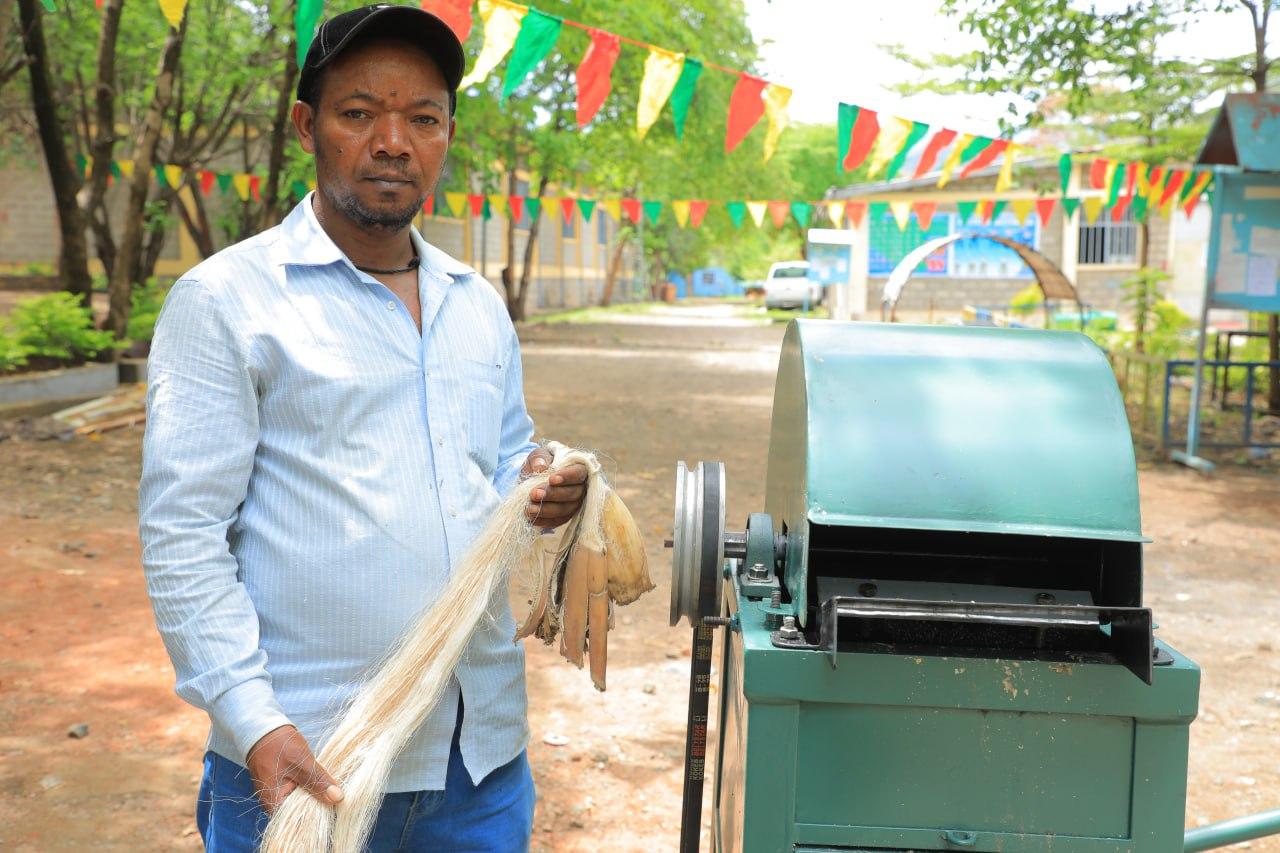
Example 1 Subsistence farmers extract fibres from false banana tree stems manually. The fibres are used in construction (strengthening gypsum) and rope production. Extracting fibres is a labour-intensive process to avoid this tedious task, some households simply dispose of the stems without extracting the fibre. Imported fibre extracting machines are unaffordable, even for collectives of subsistence farmers in the region. AMU and AMPSI’s local teams made (false) banana fibre extraction machines by using mostly locally available resources and sold a handful of these machines to waste processors and farmer collectives. This example shows a frugal innovation which resulted in the ability to extract fibres mechanically, which saves time and reduces fibre waste for farmer collectives.
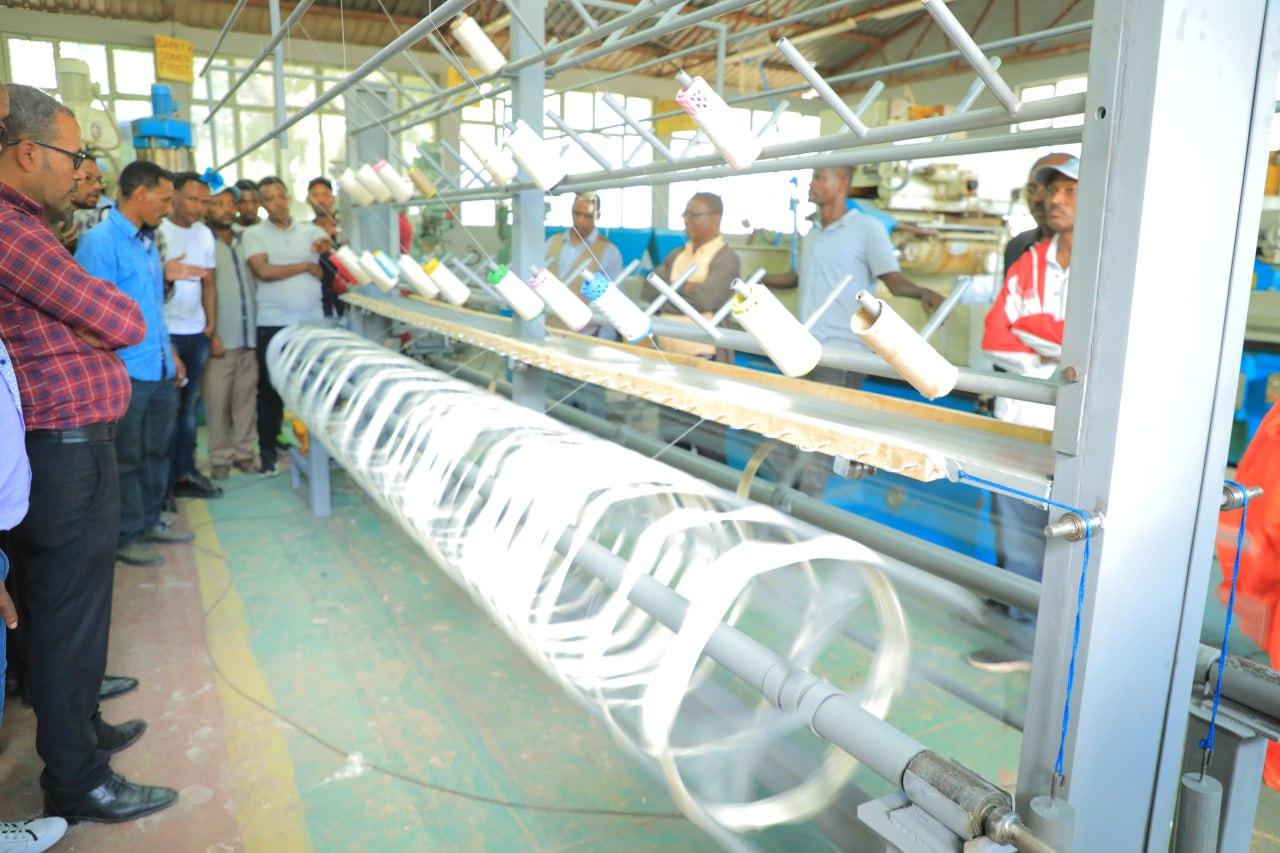
Example 2 One step in cotton processing is to turn cone-packed cotton into hanks. Traditional cotton processing and weaving families do this by hand, the industry uses an automated hank reeling machine for this task that are unaffordable to most cotton processing and weaving collectives. AMPSI’s team obtained an imported machine and reverse-engineered it with materials that are available in the local market. On top of that, they reduced the machine’s power consumption. Compared to an imported machine, the locally produced one is almost 50% cheaper, even considering a 15% profit margin and 15% sales tax. So far, local collectives and small enterprises have ordered five machines. This example shows that frugal innovation enabled industrialisation in the weaving sector, which would have been unaffordable if only the imported option was available.
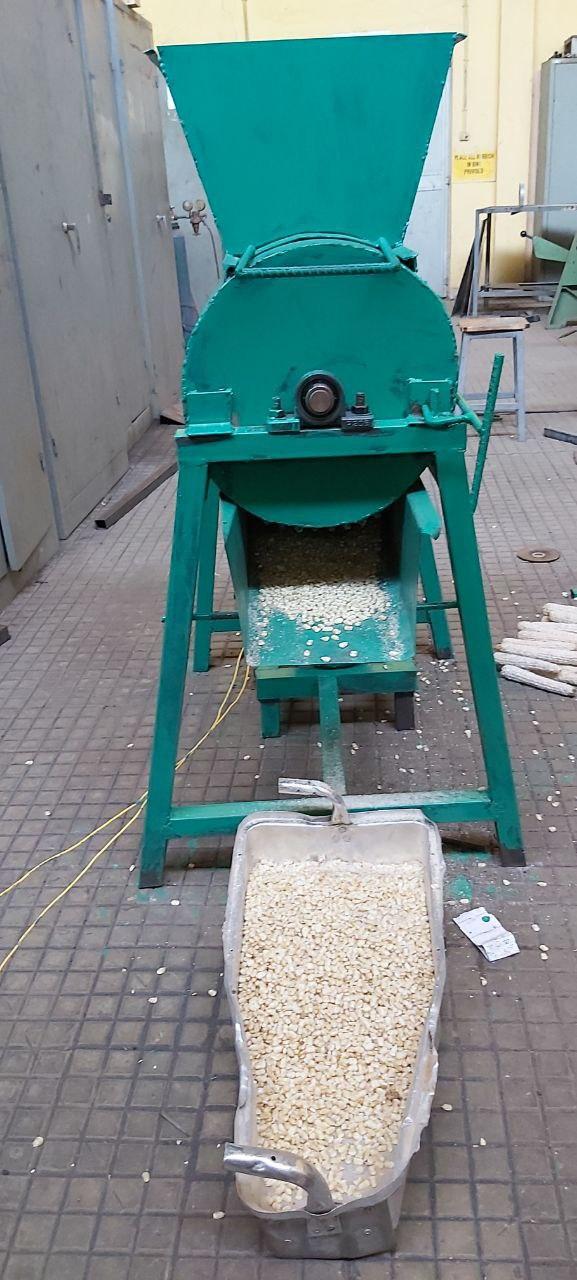
Example 3 Most subsistence farmers in the region shell maize manually, to shell a full harvest, families spend weeks and experience bruised hands. Automated maize shelling machines are unaffordable and there is hardly any infrastructure to operate them. A local team developed a small tool to ease manual maize shelling, which is adjustable to the size of the cone. It allowed skilled workers to shell up to 100 kg maize per hour. A small enterprise sold thousands of them to farmers in the region. Frugal innovation resulted in time-saving technology for local farmers. In the meantime, farmers operating above subsistence level indicated that they would like a mechanic maize sheller. Therefore, AMU’s team developed a mechanical one, from mostly locally available inputs. The machine is now being piloted by the university’s enterprise, and they have processed two hundred quintals (20,000 kg) of maize within 30 hours. This example shows that frugal innovation can increase the efficiency of local farmers.
Example 4 Instead of burning university paper waste, a project group at AMU is initiating recycling it locally into t-shirt displays, decorative items and ceiling plates which are used in construction. While in operation, the price of wood glue increased from 50 birr to 350 birr. Instead of quitting production or increasing prices, the team searched for glue alternatives. The team harvested berries of Cordus Africana and developed a procedure to turn them into glue. Cordus Africana is seasonally available in Arba Minch: from January-April the team can use ‘free’ glue. This example shows that frugal innovation made semi-finished goods (glue) and therefore consumer goods (paper products) more affordable.
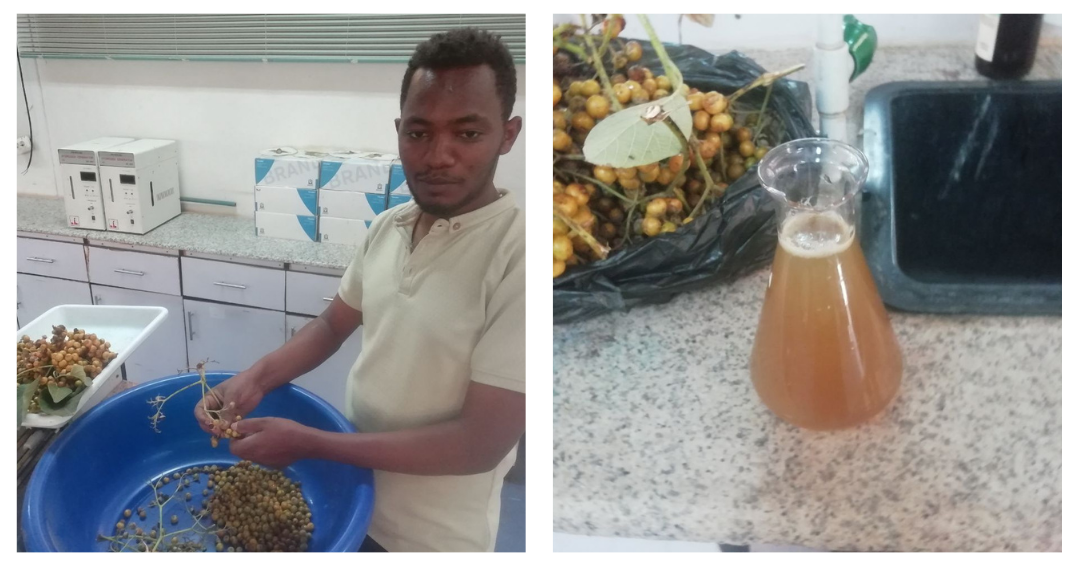
Example 5 Peanuts (ground nuts) grow well in the mountainous areas around Arba Minch. Next to raw consumption, there are small initiatives to make peanut butter and peanut oil. Shelling peanuts usually happens manually, which is labour intensive. An AMU team made a manually operatable ground nut sheller, which allows peanut processors to operate more efficiently. This example shows that frugal innovation allowed professionalization of a production process, without the need to import equipment.
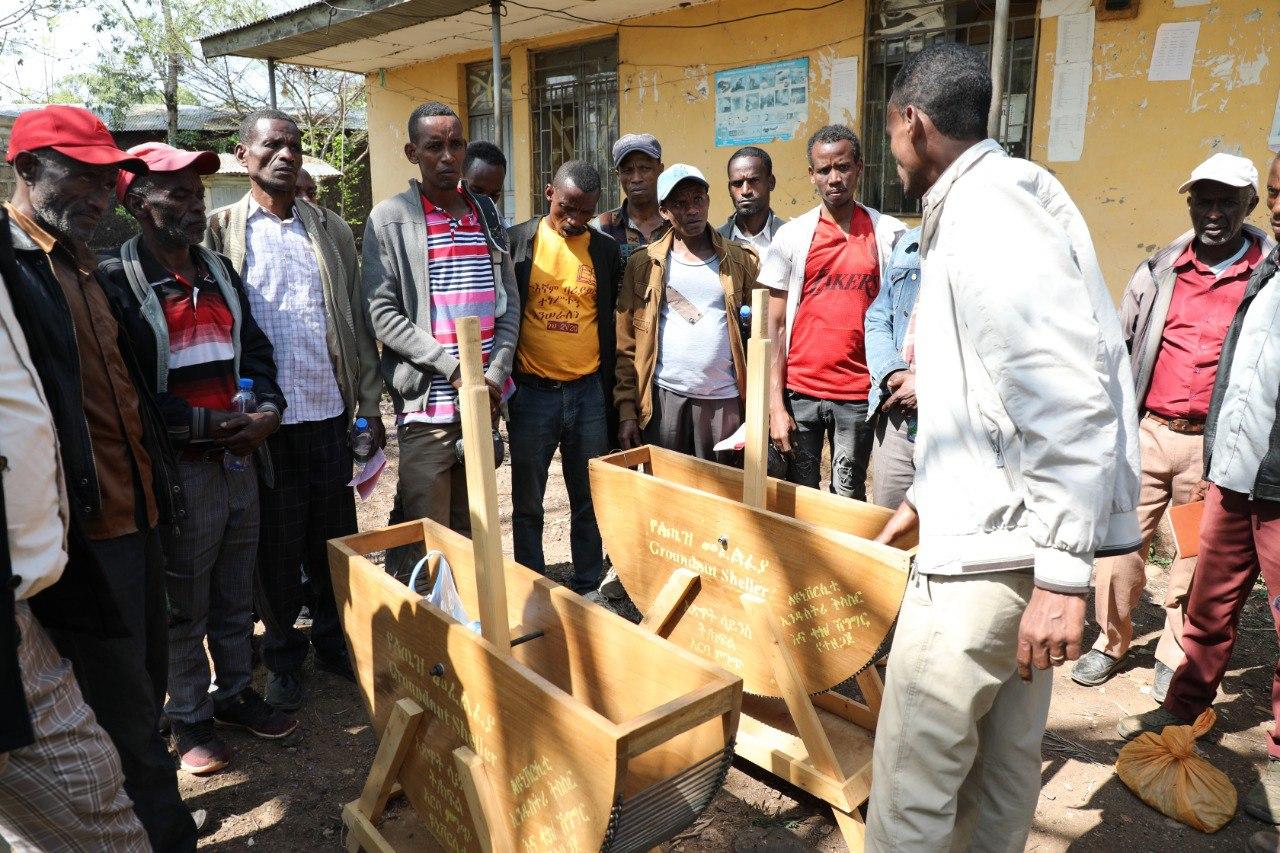
These examples show how locally developed technologies can substitute imported machinery and make it accessible to new individuals, communities, and sectors. It proves that frugal innovation can contribute to the country’s goal to become more self-sufficient in food, beverages, textiles, and clothing. To be clear, these projects are developed by a small subset of Arba Minch’ residents. For individuals coming from economically disadvantaged communities innovating frugally is obstructed by the constant strain of subsisting. Conversely, individuals from (relatively) more affluent backgrounds do not innovate due to a lack of familiarity and engagement with ideas on how to innovate frugally. Therefore, it can be said that living standards are not the main barrier to fostering innovation. Innovation thrives in environments that encourage curiosity, creativity, and open-mindedness. This is lacking in current school curricula, which remain theoretically oriented.
When addressing specific production challenges, some engineers encounter difficulties in finding affordable solutions. A possible explanation is that most engineers refer to traditional engineering textbooks, which detail theoretical R&D processes, and not to online resources describing frugal and do-it-yourself solutions. Interestingly, none of the innovators in the above displayed examples would call their innovation ‘frugal’, due to the negative connotations attached to local products. Upon pitching the concept ‘frugal innovation’ to the university’s management, and showing practical examples from all over the world, it is perceived as second-rate innovation, fearing that academic procedures and soundness are sacrificed and quality is compromised.
Shifting Perceptions and Frugality as a Mindset
Despite the resistance in both popular and policy circles, the circumstances mentioned earlier in this article create an environment where promoting frugality and changing mindsets towards frugality may be a necessary aspect of economic development. If Arba Minch’ citizens began to consider frugality as somewhat of a “life hack” rather than a cheap and compromising solution, a frugal innovation ecosystem could be created. Rather than focusing on arguments against industrialization, students and instructors could take pride in addressing production inefficiencies, acquiring practical skills, and, in turn, fostering the creation of more innovative and cost-effective solutions. Propagating frugal technology instead of classical technology would increase the reach of development projects; there would be less need for foreign currency; consumer prices would drop; new consumer goods would enter the market; and local maintenance of machinery would be feasible (which means very affordable).
In the context of Arba Minch, frugal innovations which substitute imported machinery and imported consumer goods encourage competition and industrialization, which improves consumer surplus. The main task ahead is to replace engineers’ and entrepreneurs’ theoretical knowledge on engineering standards with practical problem-solving skills, and let them be proud, rather than ashamed, on developing frugal solutions.
Geertje is a Dutch development economist who has lived in Arba Minch (Ethiopia) since 2019. She previously taught economics, research methods and statistics, but realising that most of her students ended up unemployed, this lead to her shifting her focus to guiding youth towards (self) employment through frugal, sustainable, and bottom-up initiatives.
